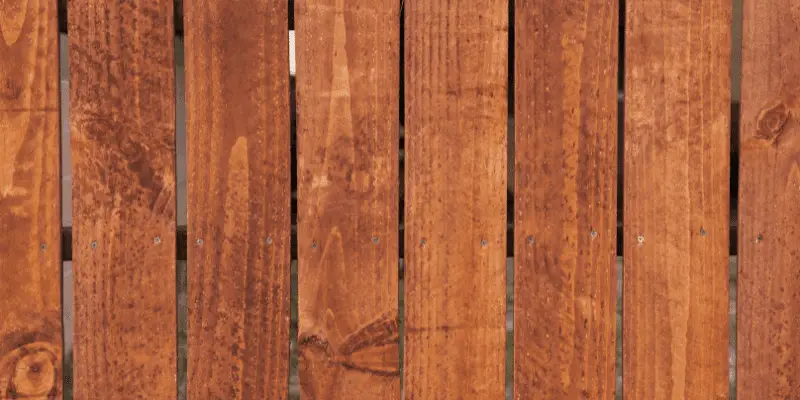Cedar and redwood are both durable, weather-resistant woods commonly used in outdoor applications such as decking and fencing. These woods have distinct characteristics that make each of them suitable for different applications.
Cedar is known for its natural resistance to rot and insect infestation, making it an excellent choice for outdoor use. Redwood, on the other hand, is prized for its rich, reddish-brown color and durability, making it a popular choice for outdoor furniture and decorative structures.
Understanding the differences between cedar and redwood can help you make an informed decision when choosing the right wood for your outdoor projects. We will explore the unique qualities of cedar and redwood, along with their respective advantages and disadvantages, to help you determine which wood is the best fit for your specific needs.
Cedar Vs Redwood: A Comparison
When it comes to choosing the right wood for outdoor projects, Cedar and Redwood are two of the most popular options. Both are known for their natural beauty and durability, but they have distinct characteristics that set them apart. In this comparison, we’ll delve into the key features of both Cedar and Redwood, helping you make an informed decision for your next project.
Characteristics Of Cedar
Cedar, known for its natural resistance to decay and insects, is a popular choice for outdoor applications. It is a lightweight wood with a straight grain, making it easy to work with. Additionally, Cedar has a distinct aroma and contains natural preservatives that contribute to its longevity.
Appearance And Color
Cedar is revered for its stunning appearance and rich color variations. Its hues range from light browns to deep reds, providing a warm and inviting aesthetic. Over time, Cedar may naturally weather to a silver-gray patina, but it can be maintained with proper care and finishing.
Durability
Cedar is naturally resistant to decay, rot, and insect damage, making it a durable option for outdoor structures. It also has a low density, which allows it to withstand moisture and weathering. While it may not match the longevity of Redwood, Cedar’s durability makes it an excellent choice for many outdoor projects.
Cost-effectiveness
When it comes to cost, Cedar tends to be more affordable than Redwood, making it an attractive option for budget-conscious projects. Its natural resistance to decay also contributes to long-term savings by reducing the need for frequent maintenance.

Properties Of Redwood
Redwood is a highly popular building material known for its exceptional properties that make it a favored choice for outdoor applications such as decking, fencing, and siding. When considering redwood as a building material, it’s essential to understand its unique properties which set it apart from other wood options.
Visual Appeal
Redwood boasts a stunning visual appeal that adds a touch of natural beauty to any outdoor project. Its rich, reddish-brown hue with distinct grain patterns gives an elegant and timeless look to any structure. Moreover, the natural luster of redwood can be easily accentuated through the application of a clear sealant or protective finish, further enhancing its visual allure.
Natural Resistance
One of the most remarkable properties of redwood is its natural resistance to decay, rot, and insects. This inherent resistance is due to the presence of tannin and other natural compounds within the wood, making it well-suited for outdoor applications without the need for chemical treatment. As a result, redwood maintains its integrity and durability even in harsh environmental conditions, providing long-lasting protection against decay and pests.
Longevity
Redwood is renowned for its exceptional longevity, making it a wise investment for outdoor constructions. Thanks to its natural durability and resistance to decay, redwood structures can endure for decades with proper maintenance. The longevity of redwood not only ensures the longevity of the structure but also minimizes upkeep, saving time and resources in the long run.
Suitability For Outdoor Projects
When it comes to choosing the right wood for outdoor projects, cedar and redwood are two popular options. Both woods are known for their natural resistance to decay and insects, making them ideal for outdoor use. However, they have some differences in terms of their environmental impact, maintenance requirements, and versatility.
Environmental Impact
Cedar and redwood are both sustainable options for outdoor projects. Cedar trees grow abundantly and are widely considered sustainable due to their rapid growth and ease of replanting. Redwood, on the other hand, is less abundant and takes much longer to mature, making it a less sustainable choice in some cases. However, both woods are often obtained from responsibly managed forests, reducing their environmental impact.
Maintenance Requirements
Both cedar and redwood are low-maintenance options for outdoor projects. They are naturally resistant to rot, decay, and insect damage, making them ideal for long-term use without the need for heavy maintenance or chemical treatments. However, it’s important to note that both woods will weather over time, which some may find adds character to the wood, while others may prefer to preserve the original appearance through regular sealing or staining.
Versatility And Applications
Both cedar and redwood are versatile woods with a wide range of outdoor applications. They are commonly used for decks, fences, pergolas, and outdoor furniture. Cedar is well-known for its distinct aroma and lighter color, making it a popular choice for outdoor furniture and smaller projects. Redwood, with its deep reddish-brown hue, is often preferred for larger structural projects such as decks and pergolas. Both woods are easy to work with and accept stains and finishes well, allowing for a variety of design options.
Conclusion: Choosing The Right Wood For Your Project
When deciding on the best wood for your upcoming project, weighing the merits of cedar versus redwood is essential. Both types of wood offer unique benefits that cater to different needs and preferences. To make an informed decision, it’s crucial to consider various important factors before making a choice. Let’s explore the key considerations for decision-making to guide you toward selecting the perfect wood for your project.
Considerations For Decision-making
Before deciding between cedar and redwood, take into account the following factors:
- Durability: Evaluate the expected longevity of your project and the wood’s natural resistance to decay, rot, and insect infestation.
- Aesthetics: Consider the color, grain, and overall appearance of each wood type, ensuring that it complements the desired look of your project.
- Maintenance: Assess the level of upkeep required for the wood, including staining, sealing, or other preservation methods, to ensure it aligns with your maintenance preferences.
- Cost: Factor in the initial cost and long-term maintenance expenses associated with each wood species to determine the overall economic feasibility.
- Environmental Impact: Reflect on the sustainability and eco-friendliness of each wood type, considering their impact on the environment.
By carefully weighing these considerations, you can confidently make an informed decision that aligns with your project’s objectives and requirements.
Frequently Asked Questions On Cedar Vs Redwood
What Are The Main Differences Between Cedar And Redwood?
Cedar and redwood differ in color, durability, and cost. Cedar has a lighter color and is less durable but more affordable. Redwood has a rich red color, is more durable, and tends to be more expensive.
Which Wood Is Better For Outdoor Furniture, Cedar, Or Redwood?
For outdoor furniture, redwood is the better choice due to its natural durability and resistance to rot and decay. It requires less maintenance and has a longer lifespan compared to cedar when used in outdoor furniture.
Can Cedar Or Redwood Be Used For Decking And Fencing?
Both cedar and redwood are suitable for decking and fencing. While cedar is naturally resistant to insects and rot, redwood offers superior durability, making it a preferred choice for high-quality, long-lasting decking and fencing projects.
Conclusion
Both cedar and redwood offer durability and natural beauty for outdoor projects. Consider your specific needs and budget when choosing between them. With proper maintenance, either wood can provide long-lasting and appealing results. We hope this article has helped you make an informed decision for your next outdoor project.


